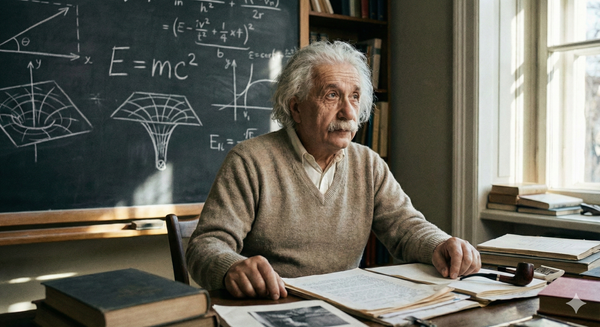Non-Attachment: The Key to Living a Fulfilled Life
Developing non-attachment is certainly not easy. However, when you make even a little effort in this direction you will find a certain lightness, freedom, and joy constantly flowing beneath all your life experiences.

Once upon a time, there lived a wise man in a small village. Along with his wife and son, he lived with a horse whom he loved dearly. One day, to his dismay, the horse ran away.
The villagers came to offer their condolences — “Oh, how bad that your horse ran away! You loved him so much.”
But the wise man, nonplussed, said, “We’ll see.”
A few days later the horse returned, bringing with him a mare! The villagers now congratulated him — “Oh, how wonderful! Now you have two horses!”
But the wise man, nonplussed, said, “We’ll see.”
Soon his son started training the new mare. Being accustomed to living in the wilderness, she was not easily tamed. She flung the boy to the ground, breaking his legs. The villagers hastened to offer their condolences — “Oh, how bad your son broke his legs. If only your horse didn’t bring that wild mare back to the village!”
But the wise man, nonplussed, said, “We’ll see.”
A few weeks later, war broke out in the kingdom. The king sent his soldiers to draft all able-bodied young men to fight. Since the legs of the wise man’s son were broken, the soldiers took all men except him.
As you can probably guess, the villagers exclaimed with relief — “Oh, how fortunate your son broke his legs. Now he doesn’t have to fight in the war!”
And what did the wise man say? That’s right, “We’ll see.”
This story can go on as long as we like. But the key point of the story, if you haven’t already guessed is the wise man’s non-attachment.
A little introspection will suffice for us to realize that we often behave like the villagers in the story. Every day we ride an emotional roller coaster spearheaded by our reactions to life’s events.
We like the highs but we hate the lows. The alternating highs and lows of life leave us utterly bored and exhausted. Soon, we want to get off this roller coaster.
But how do we do that? We can learn from the wise man. By suspending our judgments and reactions, we become a detached observer of life — as if watching a play unfold.
And so, when the roller coaster is going up and everyone else is excited — we can say, just like the wise man, “We’ll see what happens”; and when it's going down and everyone is terrified, we can say again — “We’ll see what happens.”
“But Wouldn’t That Make Me Apathetic?”
“To reach satisfaction in all, desire satisfaction in nothing. To come to possess all, desire the possession of nothing. To arrive at being all, desire to be nothing. To come to the knowledge of all, desire the knowledge of nothing.”
— St. John of the Cross
Non-attachment doesn’t make one dull or apathetic. Rather, it heightens the enjoyment of life. Our degree of enjoyment — whether of things or people — is greatly reduced by our fear of losing them.
If you buy a beautiful vase for your living room but are constantly worried about breaking it, I wonder how much you are enjoying it. In relationships too, the more we are attached, the less we can share pure, unconditional love.
Non-attachment doesn’t mean you stop caring about people. It doesn’t mean that you shun all possessions and lose your sense of beauty. It doesn’t mean you stop working (because, after all, “I am not attached; what’s the use?”).
No. Non-attachment means that we do all those things while still realizing that nothing belongs to us, that everything in life is on loan to us and can be taken away at a moment’s notice.
When we live with such inner freedom, our enjoyment of life is intensified.
In striving for success, non-attachment frees our energy from worries and anxieties to be then focused on improving our efforts. Indeed, people who succeed at a high level are not attached to the fruits of their actions; they find satisfaction in the action itself.
They don’t become lazy, either. Rather, they realize simply that they are not in charge of the universe. The only thing they can control is their effort. Those who worry too much about the fruits of their actions create an opposing current of tension and anxiety that prevents them from moving forward.
When your mental energy is freed from these opposing currents, it can move unhindered toward achieving whatever goal you set for yourself, thereby increasing your chances of success.
How to Develop Non-Attachment

The trouble with developing non-attachment is that we have too many attachments — more than we are aware of! Most of them are buried deep inside our subconscious mind waiting to germinate.
Working on them in a piecemeal fashion is not only tiring but ineffective. We need a way to address not each individual attachment but all of them at once. This is possible only through meditation. Research has shown that meditators have a higher level of non-attachment and, therefore, contentment.
By bringing more energy to the brain, meditation removes or greatly reduces, our attachments and unhelpful tendencies lodged in the brain. Yogis have known this for millennia, but modern science, too, has found a way to explain this. Regular meditation makes it easier to let go of neural pathways that are not helpful and develop new ones that serve us better.
Another way meditation helps develop non-attachment is by giving you an experience of inner joy and peace, which is the essence of your true nature. When you find joy within that no outward circumstance can disturb, there will be no reason left to condition your happiness on external factors.
I once heard a spiritual teacher make a humorous comment that fits perfectly in our case. “Before meditation,” he said, “man’s reaction to life is ‘What?!’ and after meditation, his reaction is, ‘So what?’”
“By the practice of meditation, you will find that you are carrying within your heart a portable paradise.”
— Paramhansa Yogannada
In addition to meditation, a helpful axiom to develop non-attachment is this: “Whatever comes of itself, let it come.” This includes both the good things as well as the bad. Indeed, whatever comes to us is neither good nor bad — it’s only our reaction that makes it so. When you practice this principle, your resistance to reality will reduce resulting in true acceptance and unshakeable peace.
Finally, my spiritual teacher, Swami Kriyananda, often advised us to practice a simple visualization at the end of every day.
Visualize a mental bonfire in your mind’s eye and offer into it all your attachments, habits, desires, and obstacles. Feel free from all that is holding you back and that you are purified. Offer up especially any new attachments you have developed throughout the day. Then, go to sleep with this thought of inner freedom.
Developing non-attachment is certainly not easy. However, when you make even a little effort in this direction you will find a certain lightness, freedom, and joy constantly flowing beneath all your life experiences.




